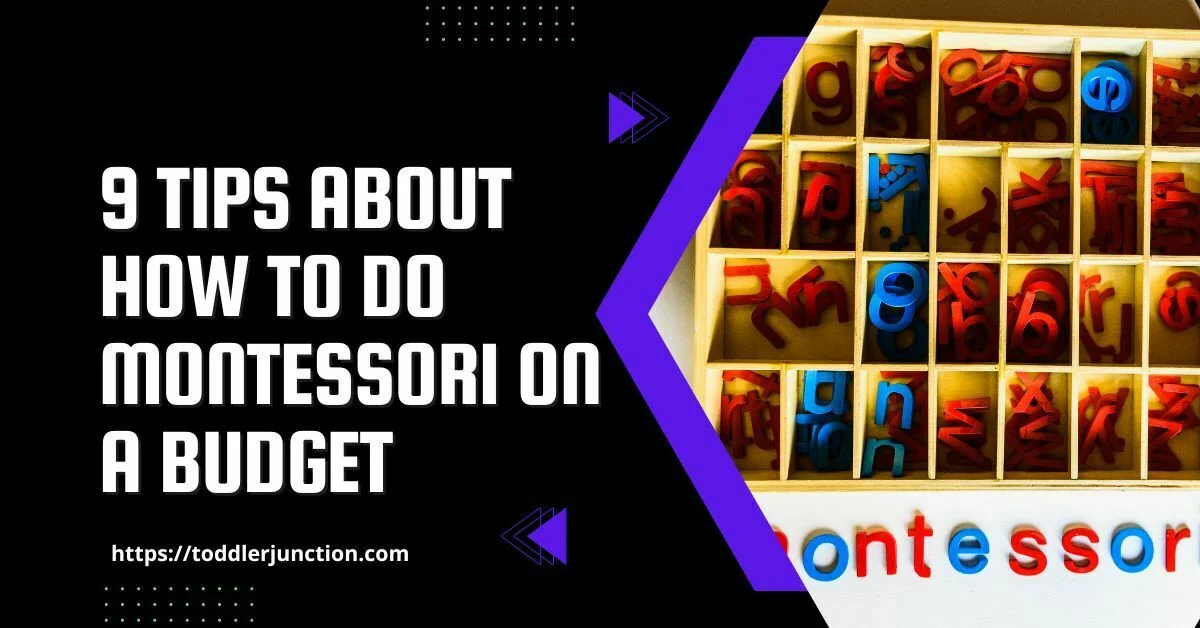It’s a terrific method to inspire your kid to learn about the world via discovery to implement a Montessori educational program at home. However, the cost of some curricula may put you off if you’re interested in utilizing Montessori at home.
Many parents and caregivers use Montessori methods in their homes due to their limited budget. But is it possible to practice Montessori on a tight budget?
This blog will teach how to implement Montessori on a budget at home.
Let’s begin.
Is Montessori possible on a budget at home?
Despite the increasing cost of many contemporary Montessori schools, the Montessori method is relatively inexpensive in and of itself. In reality, Dr. Montessori founded the Casa Dei Bambini in Rome to educate children from low-income families. Fortunately, if you have the right resources and knowledge, teaching your kid at home may be done quickly and affordably.
Can parents teach Montessori at home?
The core principles of Montessori management and education are not found in the tools we use but in how we approach and interact with the child. Certified training is the quickest way to gain the necessary understanding. Still, in this information age, anyone motivated enough to study can find many resources online.
It would help if you always learned directly from the source. We must put our efforts into altering how we raise our kids—how we interact with them, communicate with them, and work together. The price is significant, but not in money; it involves changing who we are.

Tips for introducing Montessori on a budget
Below are a few tips for implementing Montessori if you are on a budget.
1. Don’t focus exclusively on the subject matter.
Pricey Montessori schools indeed use high-quality, durable educational resources. These, however, are intended to assist numerous classes of children across several years. They are composed of metal or wood because of this.
If you wish to incorporate Montessori in the home, you may make everything relatively affordable by exchanging these goods with less expensive ones or repurposing everyday household objects. You can use woven or fabric baskets, food containers, or recycled shoeboxes instead of wooden or metal trays.
2. Bring Montessori into your parenting style.
Montessori is a philosophy of parenting and education as well as a way of living. If you want to include Montessori in your house but are on a tight budget, this is the most significant and affordable thing you can do.
The most crucial and fundamental part of Montessori education is respect for children. The Montessori method treats children with grace, respect, and compassion.
Some people may find it challenging to adopt a more polite parenting approach, but once you do, you’ll find that the other Montessori teachings are simpler to follow.
- Set a good example and show empathy
- Co-regulate at times of dysregulation
- Observe your kid’s interests
- Set boundaries and permit or implement logical and natural consequences.
- keep an eye out for delicate times
- Attempt not to interrupt or praise excessively
3. Keep your focus on everyday activities
Activities from everyday life are a crucial component of the Montessori approach. In real life, you must consider your child’s surroundings and look for opportunities to involve and motivate them.
What inexpensive, practical life activities based on the Montessori method are recommended? They are all of them! Some of them are as follows:
- Washing hands
- Self-care includes brushing teeth, blowing the nose, and washing one’s hair.
- Putting on and taking off clothes
- assistance with laundry
- maintaining plant life
- mopping and sweeping
- assisting with meal preparation
You probably already have most of these objects in your home and use them frequently for upper activities. It takes a few minor adjustments to make them comfortable and the right size for your child.
4. Include nature in the Montessori activities
Guess what? It’s free. Explore parks, nature preserves, forests, playgrounds, and other public areas with your child. By providing your child with more than any pricey object designed in the Montessori method could, doing this occasionally can enhance their experiences.
Kids are curious about everything, including the dirt on the ground, the little weed that has just begun to grow, and the song of a bird you didn’t even notice. When you are outside, learning is a multi-sensory experience.
Trying seed planting with your kids is also a cheap activity. You might even get some soil and straggler seeds from your neighborhood nursery. Searching for earthworms or other bugs, or observing birds or butterflies, are all free activities.

5. Go bargain hunting
As soon as you incorporate Montessori principles into your house, you’ll start finding some fascinating things in the most unlikely locations.
Visit thrift and second-hand stores because they are frequently stocked with products like wooden toys and baskets. Remember that stock varies, so stop by cheap shops, chain stores, and dollar stores sometimes. Your treasures most likely won’t even be toys.
Some ideas include a keyring that may be concealed in an old purse for your youngster to practice zippers, sugar tongs for strengthening the hand, and ice cube trays that can be used to sort pebbles.
6. Make sure you have enough storage.
To set up a Montessori atmosphere for your child, you must have a clutter-free place. Your child will be more at ease and eager to experiment with new things in a clean, organized home.
Your youngster will view their possessions with new eyes, and your toys will last longer while keeping your houses cleaner. Therefore, set aside a modest amount of cash every week and purchase additional storage for your belongings at the end of the calendar year.

7. Think about DIY
Why not use your creativity to create items for your child that Montessori inspires? The toys you can create using pom-poms, cardboard, or unused jars are incredible—toddlers and babies both like opening and closing empty containers. Beyond toys, you can DIY other things.
Here are some concepts to get you started:
- You can conduct basic scientific experiments with some items you already have in your homes, such as vinegar and baking soda.
- Use straw pieces and pasta to teach threading.
- Color an old box or food container to create storage for Montessori materials.
- Create a postbox by piercing a bore in a plastic water bottle.

8. Create a wish list
Even more upsetting is the possibility that you would still get unwanted gifts from kind relatives despite being on a tight budget. Maintaining a wishlist that includes ideas for your loved ones is acceptable. For instance, mention your collection of farm animals, high-quality pencils, or books and invite others to contribute a book to it.
9. Make use of your neighborhood resources.
Remember that a youngster doesn’t need to own anything to learn from it or gain something from it. The lending library is a valuable resource that should play a significant role in every child’s life. You may find Montessori books in your local library or download free copies online at www.gutenberg.org.
Similarly, some communities arrange toy libraries, homemade toy swaps, and co-ops. Remember that most Montessori things meet a child’s needs for a few months to several years. If they outgrow an item, it should be used by another child rather than being thrown away.
Conclusion
As you can see, practicing Montessori on a tight budget is entirely feasible. Doing Montessori without supplies is also acceptable. Just remember that someone may have the most beautiful Montessori-inspired living place and all the supplies but still be unable to implement Montessori.
The Montessori approach is not fundamentally about beautiful furnishings and toys. It involves developing a deep bond with your child and assisting them in getting hands-on practice with well-made tools.


